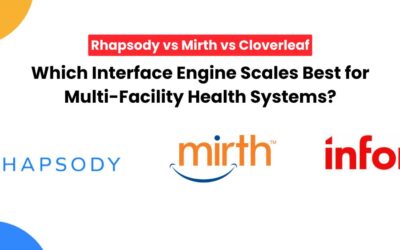Understanding ONC Interoperability Rule For Providers
The goal of the ONC interoperability rule is to empower patients with access to their medical data so they can make better health care decisions. In this article, we discussed the ONC interoperability rule and how it means for providers and Healthcare Information Exchange(HIE).
What Are ONC Interoperability Rule?
The Office of the National Coordinator for Health Information Technology (ONC) released the interoperability rule as a part of the 21st Century Cures Act, primarily focusing on data exchange and patient information blocking in March.
Proposed in February 2019, the rule also supports patients accessing and sharing their electronic health information, which helps patients coordinate their healthcare.
Like CMS’ ruling, the ONC’s regulation also has requirements for APIs to use the FHIR standard, enabling patients to use APIs for free access to all of their health information. The ruling also contains important changes to the certification program that requires healthcare vendors and application developers to update existing technology.
The rule also prohibits information blocking and aims to hold health IT developers, such as Electronic Health Record(EHR) vendors, accountable as a condition of certification. To comply with the rule, providers, and health information exchanges will need to prepare accordingly.
The ONC rule applies more generally to healthcare providers that are participating in CMS funded health IT programs, such as Promoting Interoperability, as well as to a broader definition of providers listed in the Public Health Service Act.
RELATED: #1 GUIDE TO CMS RULE TOWARDS HEALTHCARE INTEROPERABILITY
What ONC Means For Providers
Beginning on November 2, 2020, compliance is required for the information blocking provisions of the rule.
Information blocking is the intentional withholding of patient health information either from provider to provider or provider to patient.
Overall, the rules require providers to:
- Provide patients with easy access to their medical record
- Limit information blocking by sharing patient data with insurance companies, employers, and consumer-facing smartphone apps
- Release nearly all lab, radiology, and pathology results into the patient portal
- Updating clinician information in federal databases
Since the proposal occurred in early 2019, many providers were making strides to comply with the rules. Providers are giving patients better access to their respective medical records, such as test results, and putting patients in control of their health data, through patient portals.
ONC & Healthcare Information Exchange
The interoperability rule focuses on making patient data more interoperable for patients, providers, payers, and virtually the whole healthcare ecosystem. The ONC rule will require information to be more standardized, imposing terminology standards on the information’s meaning. HIEs contain patient data from all the different sources. Instead of providers having to create numerous open APIs or connections to various vendor applications, an HIE can help aggregate or consolidate data.
CapMinds Interoperability Solutions:
Ready to move toward the next phase of healthcare interoperability? Get started with CapMinds Interoperability solutions.




